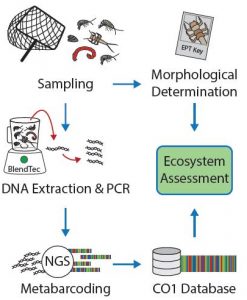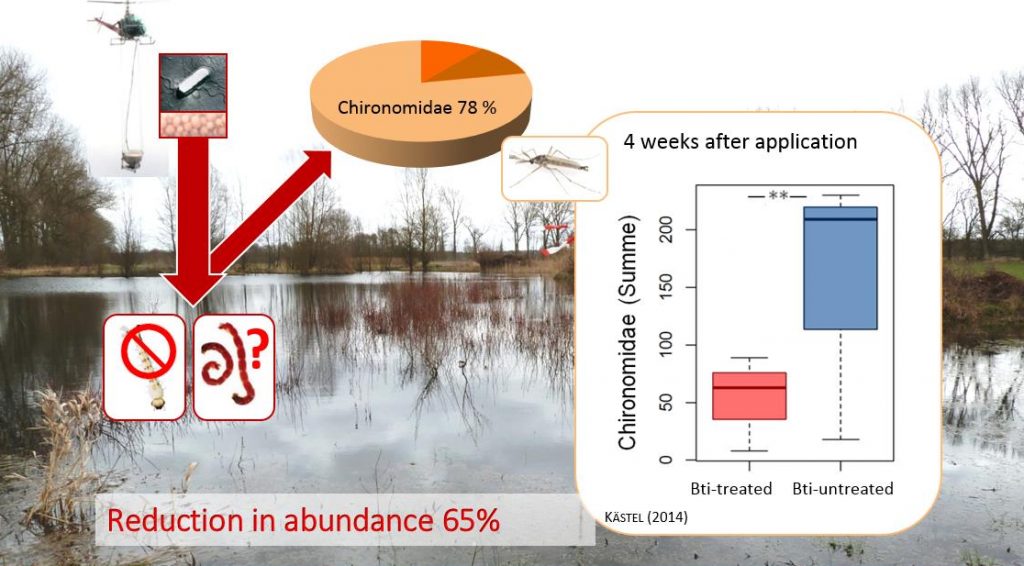In this post, Kathrin Theissinger talks about their recently published paper “Using DNA metabarcoding for assessing chironomid diversity and community change in mosquito controlled temporary wetlands”.
The biocide Bacillus thuringiensis var. israelensis (Bti) is widely applied for mosquito control in temporary wetlands of the German Upper Rhine Valley. Even though Bti is considered environmentally friendly, several studies have shown non-target effects on chironomids, a key food resource in wetland ecosystems. Chironomids have been proposed as important indicators for monitoring freshwater ecosystems, however, their taxonomy is very challenging. Metabarcoding thus provides a promising tool to retrieve species identifications without the need for labor intensive morphological determination.
Together with our collaborators from the LeeseLab at the University of Duisburg-Essen, we investigated the effectiveness of metabarcoding for chironomid diversity assessment. Furthermore, we tested the retrieved chironomid operational taxonomic units (OTUs) for possible changes in relative abundance and species diversity in relation to Bti treatment in four temporary wetlands next to Neustadt/Weinstrasse. Three of these wetlands were, for the first year after 20 years of Bti treatment, partly left Bti-untreated in a split field design, and one wetland has never been treated with Bti.
Our metabarcoding approach detected 54 chironomid OTUs across all study sites, of which almost 70% could be identified to species level compared against the BOLD database. We showed that metabarcoding increased chironomid species determination by 70%. However, we found only minor significant effects of Bti on the chironomid community composition, even though Bti reduced the overall chironomid emergence by 65%. This could be due to a time lag of chironomid recolonization, since the study year was the first year of Bti intermittence after about 20 years of Bti application in the study area.
Subsequent research will have to address if and how the chironomid community composition will recover further in the now Bti-untreated temporary wetlands to assess effects of Bti. A follow-up study comparing the chironomid species composition in three different wetland types (temporary; Rhine flood plains; forest) and three different times of Bti intermittence (recently untreated; never treated; 20 years of treatment) is currently in preparation.
The paper was authored by Kathrin Theissinger, Anna Kästel, Vasco Elbrecht, Jenny Makkonen, Susanne Michiels, Susanne Schmidt, Stefanie Allgeier, Florian Leese and Carsten Brühl, and published in Metabarcoding and Metagenomics.
For inquiries regarding metabarcoding please contact Kathrin Theissinger. For questions concerning Bti please contact Stefanie Allgeier and Carsten Brühl.


